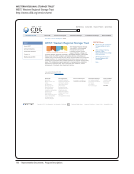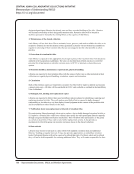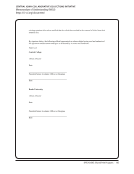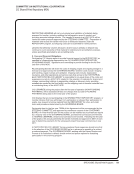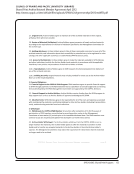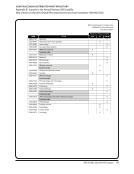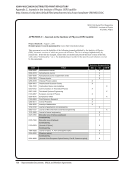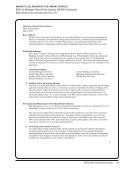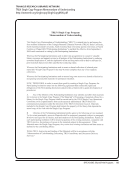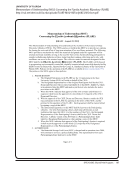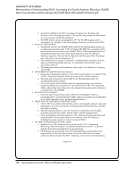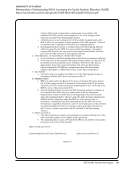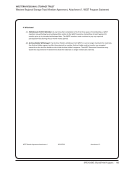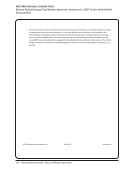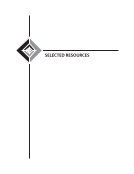48 · Survey Results: Survey Questions and Responses
For shared print monographs, some librarians are concerned that users want to use print and ebooks in different ways and at
different times in the research process. While many libraries have invested heavily in digitizing monograph collections, most of the
digitized copies will not be fully available for many years (by license, revisions to copyright law, or other means) suggesting a long
window of opportunity for dual format management. Some librarians are also concerned that if we reduce the number of print copies
in the network through shared print arrangements without addressing delivery models for fewer retained copies, we will be doing a
substantial disservice to users across the network.
21. Please indicate how important it is, if at all, that the following services are explored and
experimented with in the future to better understand the access infrastructure that may be
needed for shared monographs, regardless of whether your library currently provides these
services or retains shared collections. Please make one selection per row. N=50
Services 1 Not at all
Important
2 3 Important 4 5 Very
Important
N
Coordinated digitization of shared print monograph
collections
0 4 16 13 17 50
Metadata cross walks between shared print copies
and digital copies and unified display
0 5 6 23 15 49
Scan-on-demand services to authenticated users
across a broad network of libraries and repositories
1 3 15 15 15 49
Expanded interlibrary lending networks 0 8 15 17 10 50
Direct delivery services by mail to authenticated
users across a broad network of libraries and
repositories
1 11 15 14 9 50
Business models that provide incentives to
implement additional access services at retaining
libraries and repositories
1 6 21 14 8 50
Print-on-demand for digital repositories 0 8 20 14 7 49
Preferred pickup locations integrated into a shared
discovery layer across a broad network of libraries
and repositories
1 10 20 14 5 50
Harmonized loan periods and rules 1 21 15 8 5 50
Business models that engage users to support
enhanced access services, digitization and shared
print retention (i.e., some “free” and some “for a
fee” options)
4 12 15 16 3 50
Total Responses 6 36 46 45 31 50
For shared print monographs, some librarians are concerned that users want to use print and ebooks in different ways and at
different times in the research process. While many libraries have invested heavily in digitizing monograph collections, most of the
digitized copies will not be fully available for many years (by license, revisions to copyright law, or other means) suggesting a long
window of opportunity for dual format management. Some librarians are also concerned that if we reduce the number of print copies
in the network through shared print arrangements without addressing delivery models for fewer retained copies, we will be doing a
substantial disservice to users across the network.
21. Please indicate how important it is, if at all, that the following services are explored and
experimented with in the future to better understand the access infrastructure that may be
needed for shared monographs, regardless of whether your library currently provides these
services or retains shared collections. Please make one selection per row. N=50
Services 1 Not at all
Important
2 3 Important 4 5 Very
Important
N
Coordinated digitization of shared print monograph
collections
0 4 16 13 17 50
Metadata cross walks between shared print copies
and digital copies and unified display
0 5 6 23 15 49
Scan-on-demand services to authenticated users
across a broad network of libraries and repositories
1 3 15 15 15 49
Expanded interlibrary lending networks 0 8 15 17 10 50
Direct delivery services by mail to authenticated
users across a broad network of libraries and
repositories
1 11 15 14 9 50
Business models that provide incentives to
implement additional access services at retaining
libraries and repositories
1 6 21 14 8 50
Print-on-demand for digital repositories 0 8 20 14 7 49
Preferred pickup locations integrated into a shared
discovery layer across a broad network of libraries
and repositories
1 10 20 14 5 50
Harmonized loan periods and rules 1 21 15 8 5 50
Business models that engage users to support
enhanced access services, digitization and shared
print retention (i.e., some “free” and some “for a
fee” options)
4 12 15 16 3 50
Total Responses 6 36 46 45 31 50








































































































































